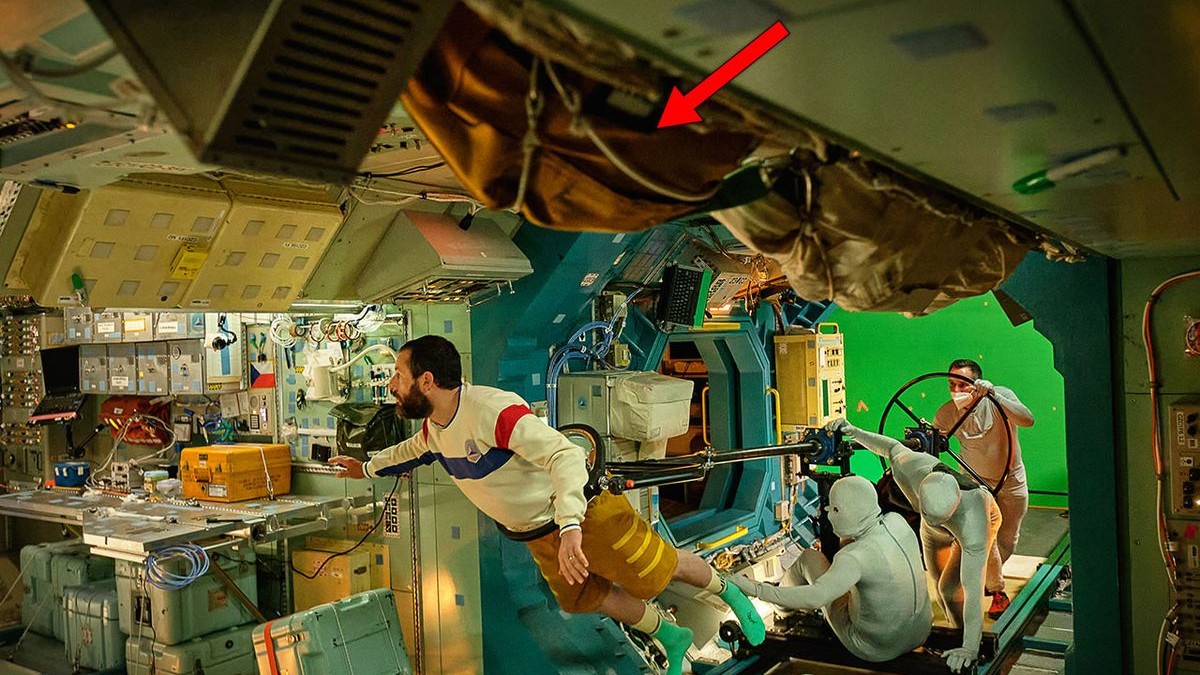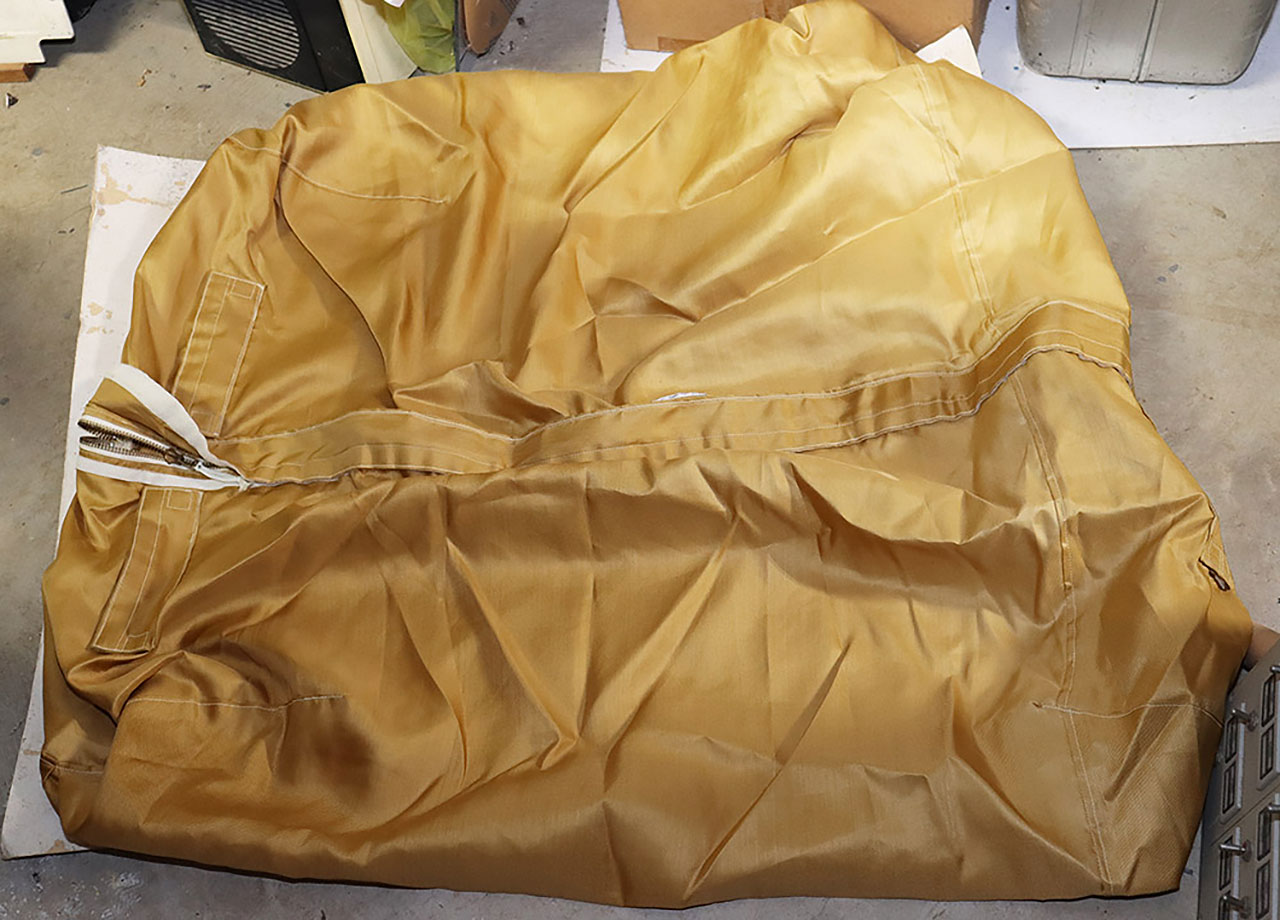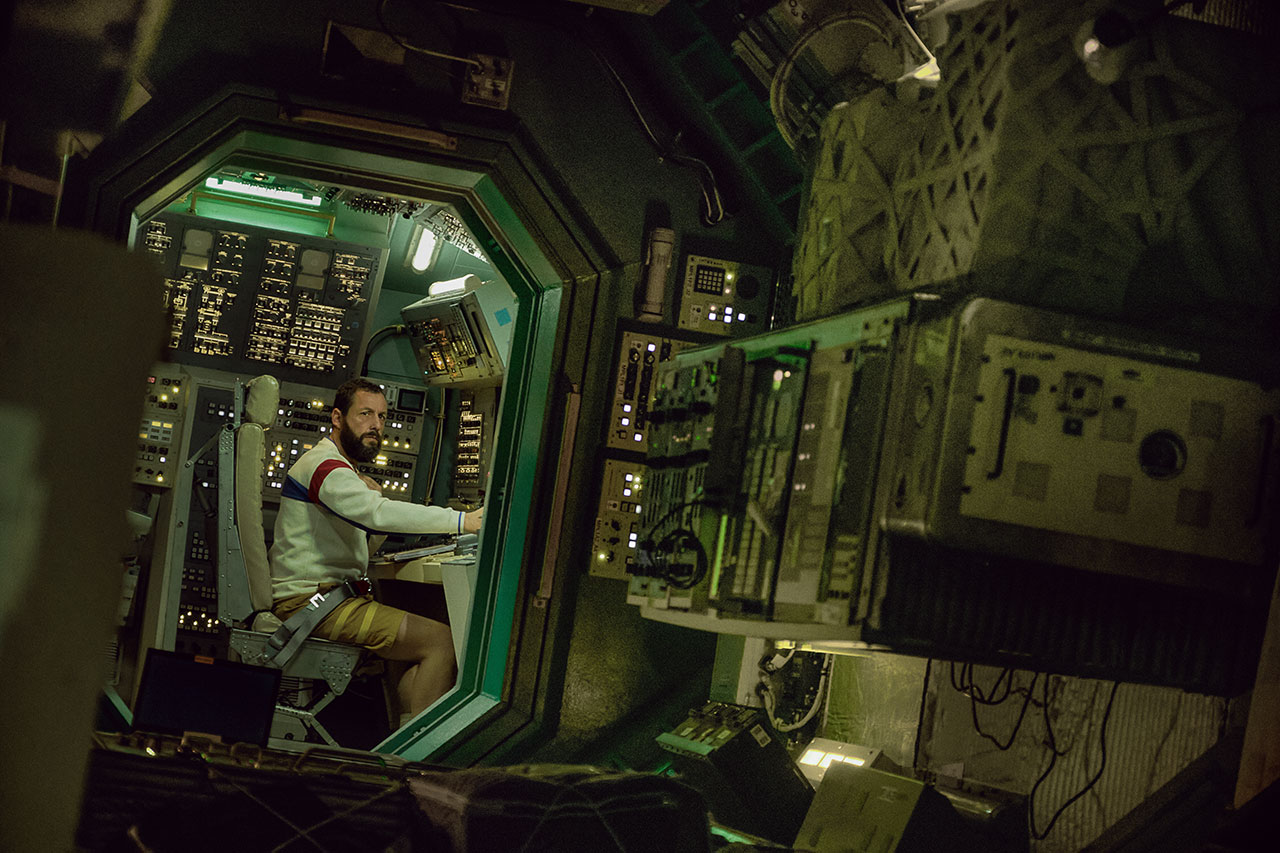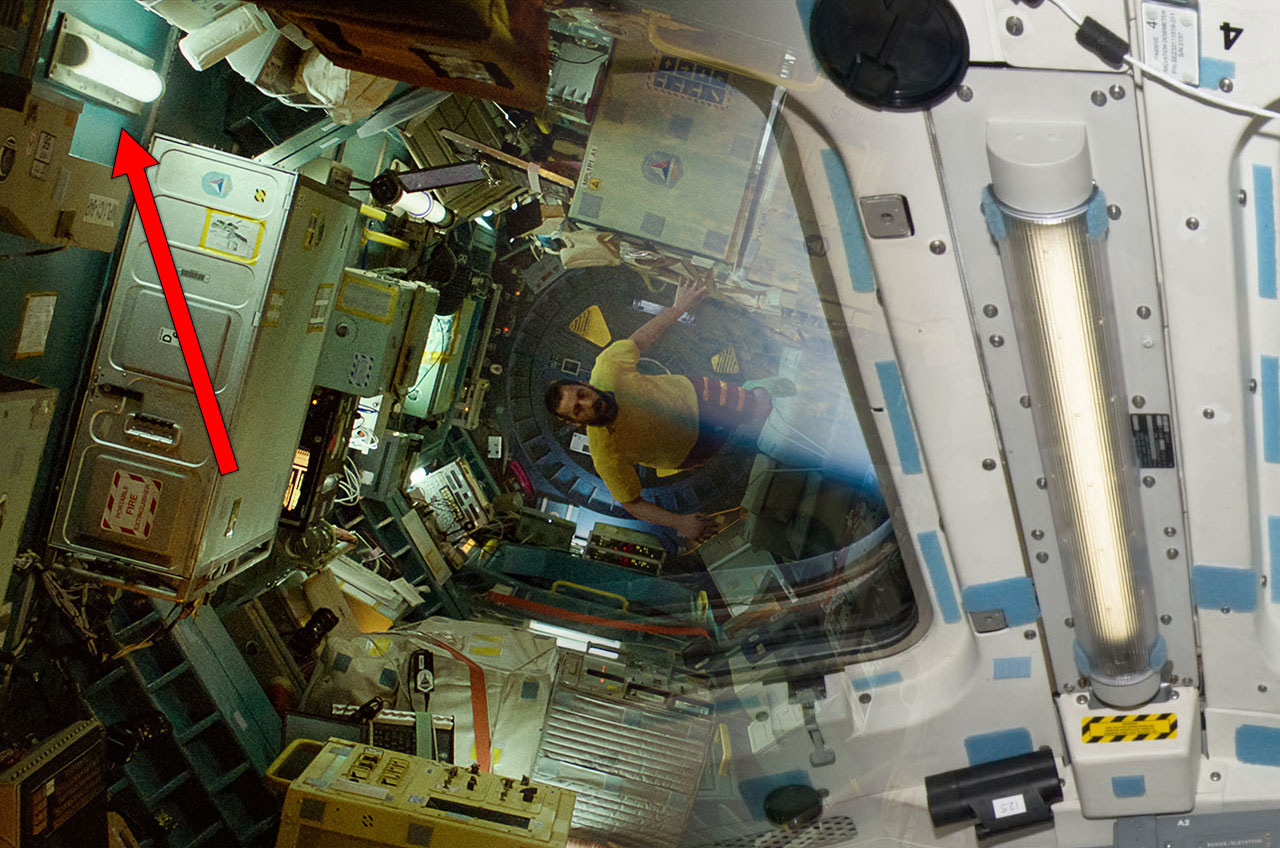Adam Sandler's 'Spaceman' used NASA artifacts to create sci-fi film's spaceship
'It was important to make life in space feel authentic.'

There is a scene in the new science fiction film "Spaceman" where Adam Sandler, playing a Czech astronaut, floats by a brown duffle bag attached to one of the walls of his spaceship.
There is nothing particularly notable about the scene and, in the context of the movie, there is nothing special about the bag. It is one of many such items that have come to be expected aboard a spacecraft.
What sets it apart is that the bag is a real piece of space equipment.
"That is a NASA surplus space shuttle suit stowage pouch," said John Fongheiser, president of Historic Space Systems, in an interview with collectSPACE. "I think it was intended for use as on-orbit stowage for a launch and entry suit. It is made of fire-resistant PBI [polybenzimidazole]."
The bag is one of several NASA artifacts that Historic Space Systems loaned to the production team to help dress their spacecraft set.
Related: 'Spaceman' sees Adam Sandler shine as a cosmonaut in crisis in Netflix's somber sci-fi film (review)

"I wanted this spaceship to be so chaotic that I would feel restless from just watching it," director Johan Renck, who worked closely with production designer Jan Houllevigue to conceptualize the ship, said in a statement released by Netflix. "We dealt with this spaceship in a very form-and-function way. There's nothing aesthetic about it. It's built by modules, nothing fanciful, very much a brutalist type of thing."
Still, there was a desire to make the fictional ship feel authentic.
"We wanted to convey realism," said Jakob Ihre, director of photography. "You need to feel the hardships of being in the spaceship."
Though not modeled after any real-life spacecraft, for those who are familiar, there are visual cues to Russia's Mir space station, the International Space Station and the shuttle.
"The studio rented all of the panels from my space shuttle forward cockpit," said Fongheiser, referring to replicas that Historic Space Systems has produced for use in simulators found at museums and NASA visitor centers.
The movie's cockpit does not resemble the shuttle flight deck, but the panels add a level of familiarity to an otherwise new setting.
"It was important to make life in space feel authentic," said Ihre.

Hence the interest in using real space artifacts, like the suit storage bag, as props.
"In addition to the space shuttle cockpit panels, the items we provided include a carbon dioxide locker door from the shuttle's middeck floor, two Apollo command module lockers in their Skylab orbital workshop configuration, a shuttle general purpose computer status matrix indicator, a shuttle circuit breaker panel, pouches — suit stowage, wipes dispenser, waste collection and various others — and two light assemblies," said Fongheiser.
Some of the artifacts were used as is, while others were used to produce replicas. The lights in the film, for example, were modeled after the real fixtures provided by Historic Space Systems.
"The larger lights were created from a fixture used in the aft flight deck of the shuttle orbiter, between the two overhead windows. A smaller fixture was modeled from the light mounted in the shuttle's forward flight deck, to the left and above the commander, as well as on the opposite side," said Fongheiser.
"The large one they reproduced in quantity, with me getting a bunch of extra shells after the production ended," he said.
"Spaceman" is not the first movie to use authentic space hardware as set dressing. The 1995 feature film "Apollo 13" not only told the true story of the NASA moon mission by the same name, but used more than 30 artifacts — some of them having flown in space — on loan from the Cosmosphere museum in Hutchinson, Kansas. (The items were never returned after filming wrapped, so they may have been used in other movies or could still be sitting in a Hollywood prop house today.)

Historic Space Systems has supported other films, most notably the 2018 Neil Armstrong biopic "First Man," but "Spaceman" marked the largest number of items they have loaned. Even so, the props still outnumbered the real hardware.
"With so many items it is possible that my artifacts will be lost in the clutter," said Fongheiser. "But I look forward to playing 'Where's Waldo?' while watching."
"Spaceman" opened in select theaters on Feb. 23 and began streaming on Netflix on Friday (March 1).
Follow collectSPACE.com on Facebook and on Twitter at @collectSPACE. Copyright 2024 collectSPACE.com. All rights reserved.
Get the Space.com Newsletter
Breaking space news, the latest updates on rocket launches, skywatching events and more!
Join our Space Forums to keep talking space on the latest missions, night sky and more! And if you have a news tip, correction or comment, let us know at: community@space.com.

Robert Pearlman is a space historian, journalist and the founder and editor of collectSPACE.com, a daily news publication and community devoted to space history with a particular focus on how and where space exploration intersects with pop culture. Pearlman is also a contributing writer for Space.com and co-author of "Space Stations: The Art, Science, and Reality of Working in Space” published by Smithsonian Books in 2018.In 2009, he was inducted into the U.S. Space Camp Hall of Fame in Huntsville, Alabama. In 2021, he was honored by the American Astronautical Society with the Ordway Award for Sustained Excellence in Spaceflight History. In 2023, the National Space Club Florida Committee recognized Pearlman with the Kolcum News and Communications Award for excellence in telling the space story along the Space Coast and throughout the world.










